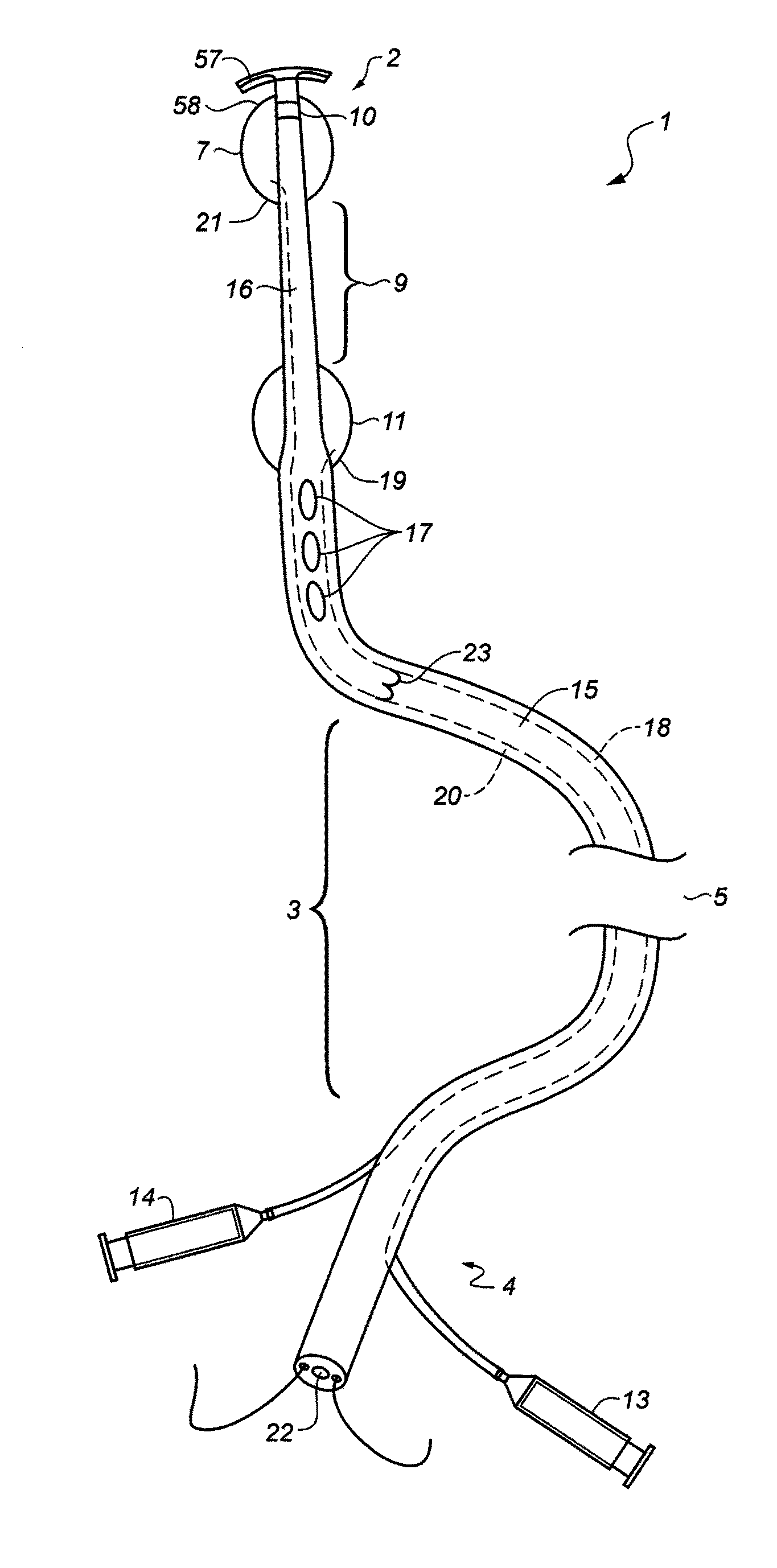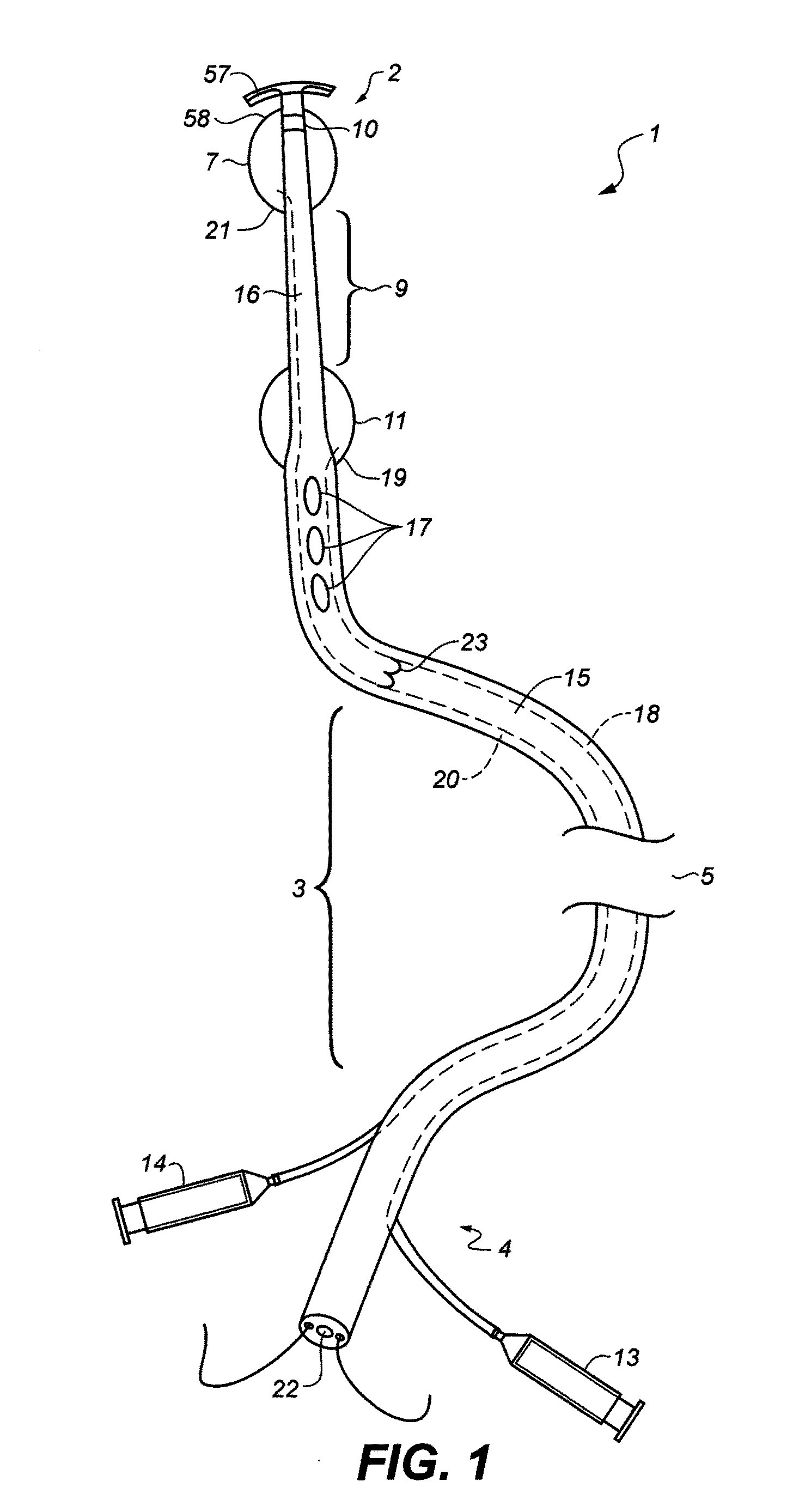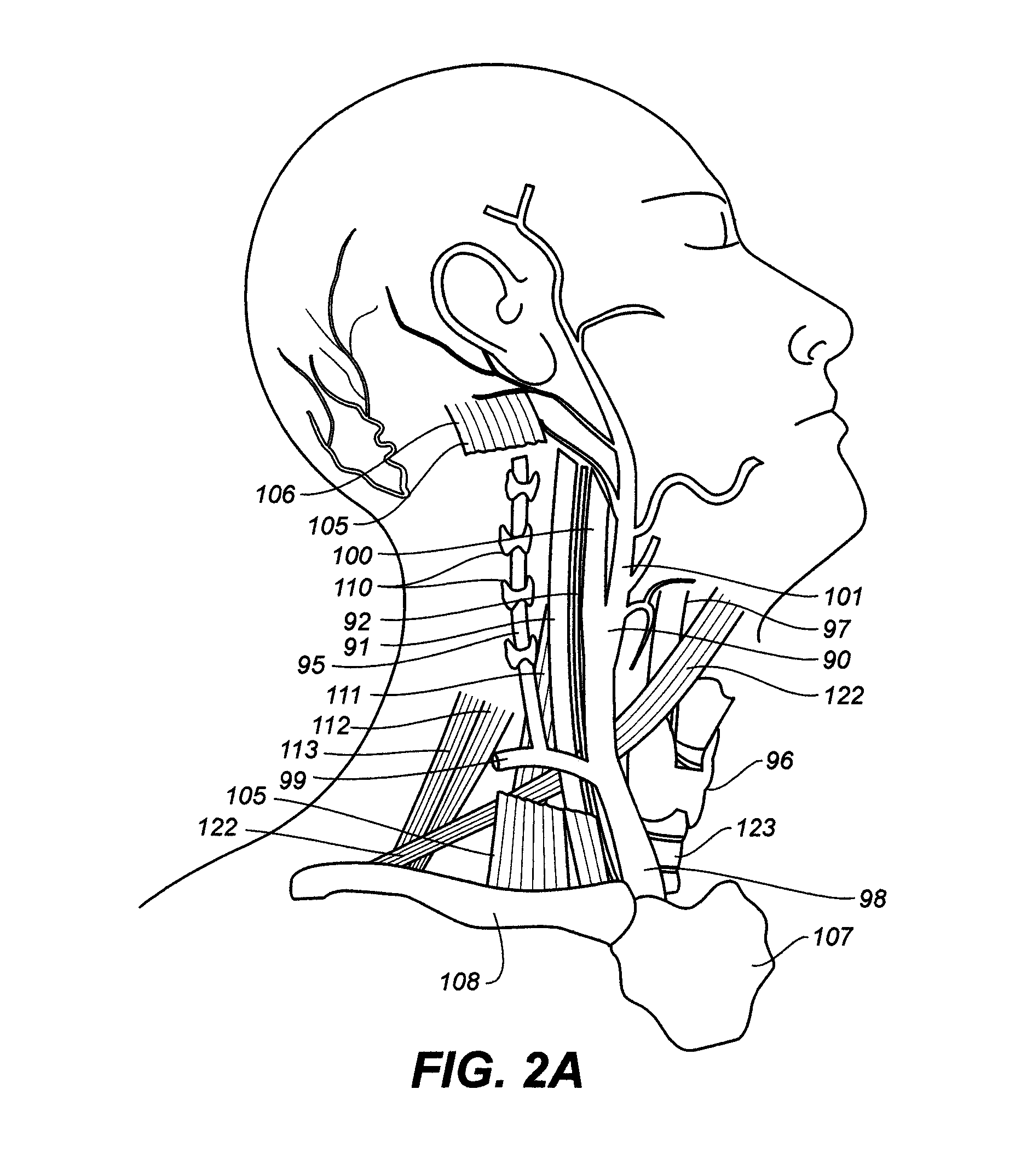Endovascular catheter with multiple capabilities
a technology of endovascular catheters and capabilities, applied in the field of endovascular catheters, can solve the problems of large permanent loss of blood flow, large plaque breakage, stroke that plagues mankind, etc., and achieve the effect of preventing morbidity and mortality
- Summary
- Abstract
- Description
- Claims
- Application Information
AI Technical Summary
Benefits of technology
Problems solved by technology
Method used
Image
Examples
Embodiment Construction
[0032]Referring now to FIG. 1 which is a general representation of a catheter 1, the catheter 1 is provided with a leading end 2, a central portion 3, and a trailing end 4. The catheter may be manufactured from a polymeric substance. The central portion 3 can be of varying lengths, and hence is shown with an interruption 5. The leading end 2 is provided with a number of unique features, beginning with a filtering net-like basket 58, which is actually the tip 57 of a guidewire used to place the catheter 1. A netting of the basket 58 is designed to capture embolic detritus which may break off or result from the surgical procedure. The leading end 2 of the catheter 1 is also provided with a nanosensor 10 which is designed to determine and document the blood flow being delivered. An internal carotid balloon 7 and a common carotid balloon 11 are fabricated from an elastomeric substance. The deployment of the netting 63 is described more completely in FIG. 6A to FIG. 6E below. An interval...
PUM
 Login to View More
Login to View More Abstract
Description
Claims
Application Information
 Login to View More
Login to View More - R&D
- Intellectual Property
- Life Sciences
- Materials
- Tech Scout
- Unparalleled Data Quality
- Higher Quality Content
- 60% Fewer Hallucinations
Browse by: Latest US Patents, China's latest patents, Technical Efficacy Thesaurus, Application Domain, Technology Topic, Popular Technical Reports.
© 2025 PatSnap. All rights reserved.Legal|Privacy policy|Modern Slavery Act Transparency Statement|Sitemap|About US| Contact US: help@patsnap.com



